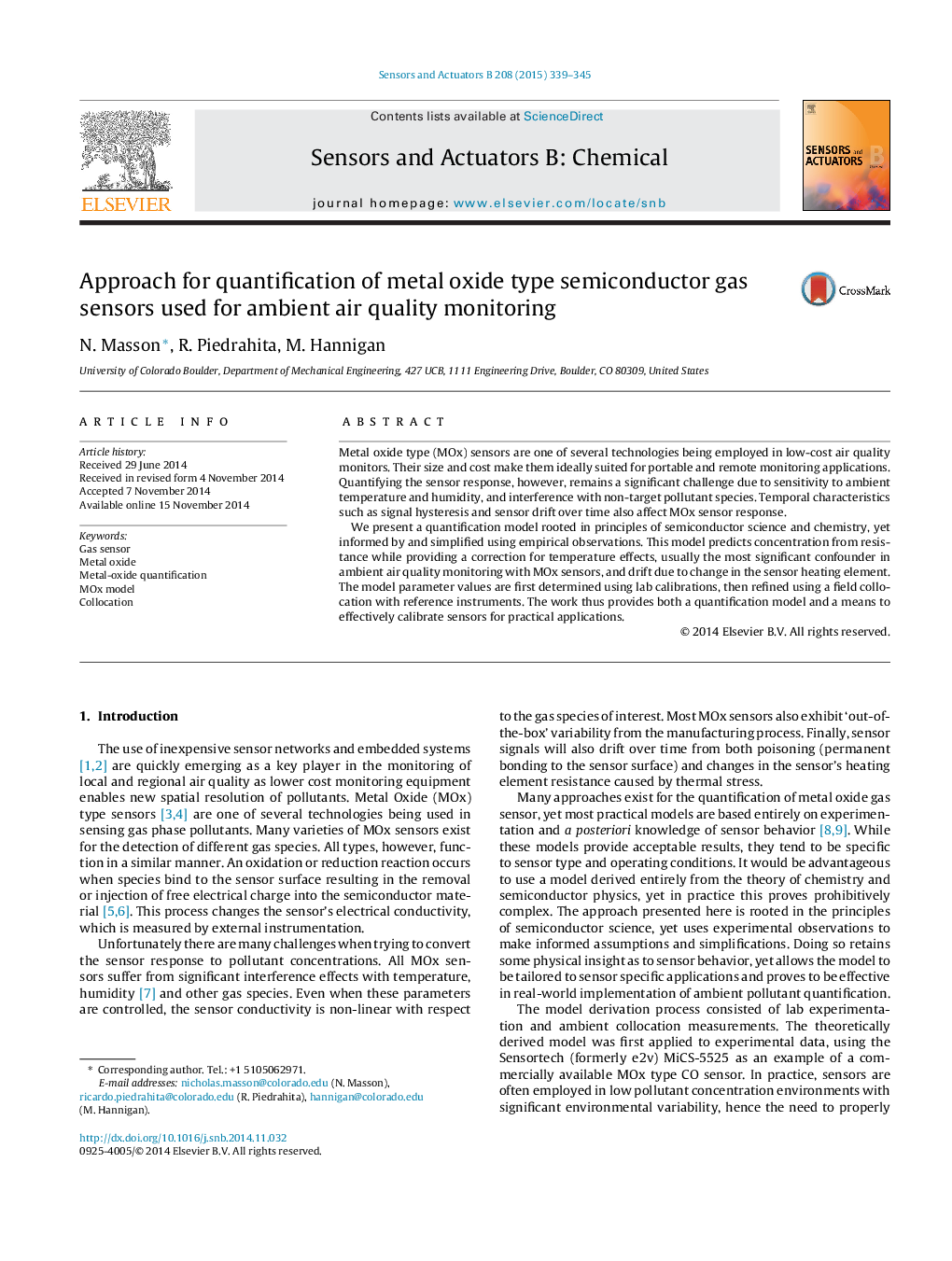| Article ID | Journal | Published Year | Pages | File Type |
|---|---|---|---|---|
| 750830 | Sensors and Actuators B: Chemical | 2015 | 7 Pages |
Metal oxide type (MOx) sensors are one of several technologies being employed in low-cost air quality monitors. Their size and cost make them ideally suited for portable and remote monitoring applications. Quantifying the sensor response, however, remains a significant challenge due to sensitivity to ambient temperature and humidity, and interference with non-target pollutant species. Temporal characteristics such as signal hysteresis and sensor drift over time also affect MOx sensor response.We present a quantification model rooted in principles of semiconductor science and chemistry, yet informed by and simplified using empirical observations. This model predicts concentration from resistance while providing a correction for temperature effects, usually the most significant confounder in ambient air quality monitoring with MOx sensors, and drift due to change in the sensor heating element. The model parameter values are first determined using lab calibrations, then refined using a field collocation with reference instruments. The work thus provides both a quantification model and a means to effectively calibrate sensors for practical applications.
